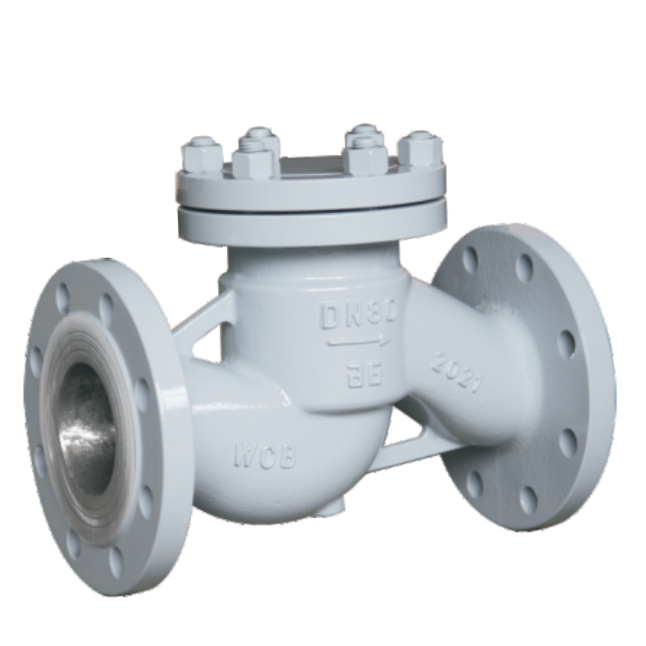Horizontal lifting spring check valve is a special type of check valve used in pipeline systems, also known as horizontal spring lifting check valve. Horizontal lifting spring check valves are usually installed horizontally or horizontally, which means that the main part of the valve is placed horizontally. This design is very useful in some specific pipeline layouts because it can save space, especially when installing valves in limited space.

Lift up design: This valve is lift up, meaning it can open or close fluid channels when needed. Usually, there is a valve core or disc inside the valve that can move vertically to control the flow of fluid. When the fluid flows in the opposite direction, the valve core will close to prevent fluid backflow. Spring design: Lift check valves are typically equipped with one or more springs that help close the valve and maintain a seal. The function of the spring is to keep the valve core in the closed position to prevent backflow. When the pressure of the fluid drops to a certain degree, the spring can allow the spool to reopen to allow fluid flow. Applicable fields: This type of check valve is usually used in pipeline systems that require strict control of flow direction to prevent backflow or reflux. They are commonly found in fields such as chemical engineering, petroleum, natural gas, water supply, and wastewater treatment. Material and specifications: The material and specifications of the horizontal lifting spring check valve may vary depending on the manufacturer and specific application, so careful consideration should be given to the pipeline requirements when selecting and installing. The design of this valve makes it suitable for applications that require high control and safety, especially in situations where backflow prevention is necessary.